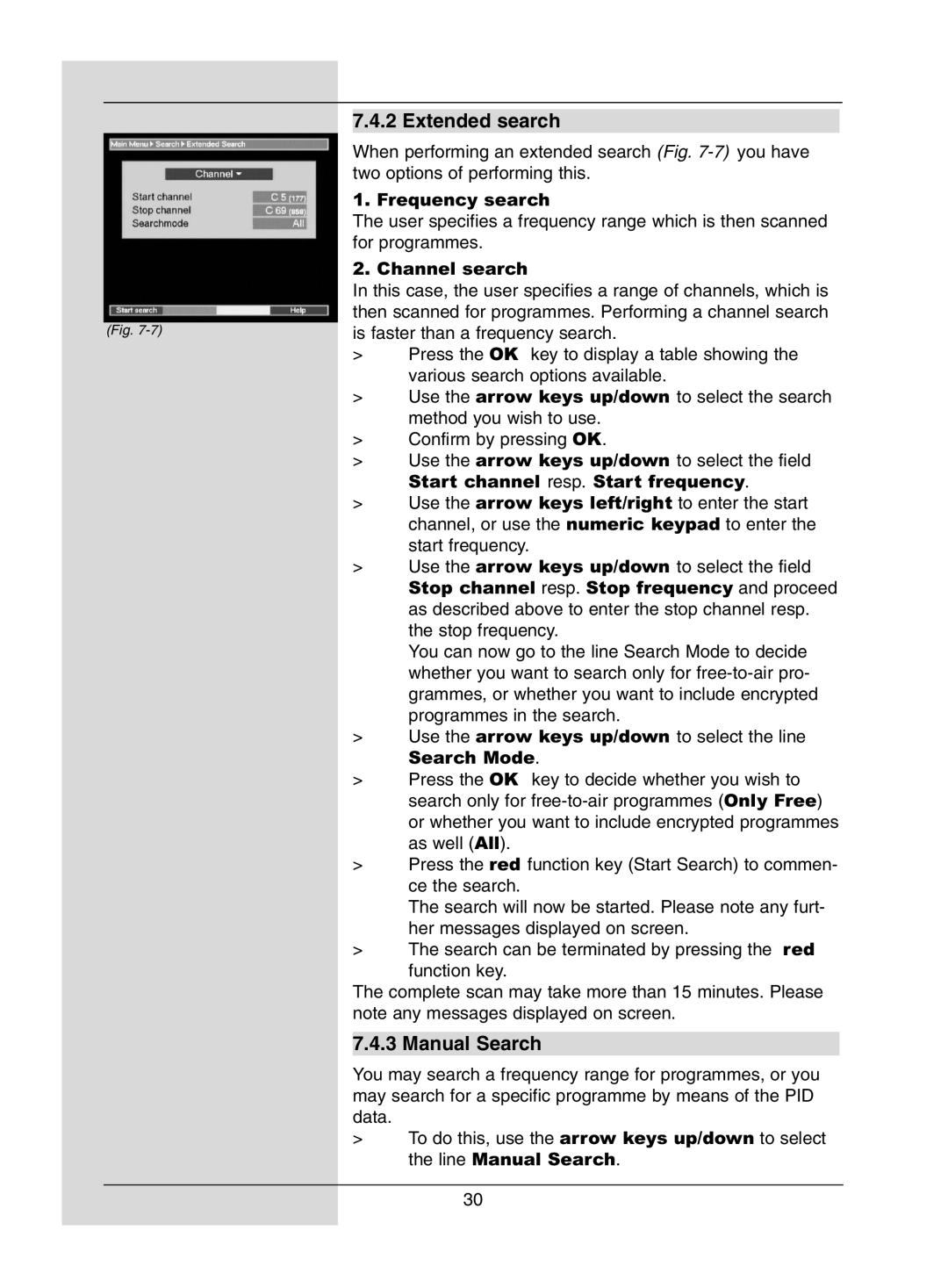
|
|
|
|
|
|
|
|
|
|
|
|
|
|
|
|
|
|
|
|
|
|
|
|
| 7.4.2 Extended search |
| |
|
|
|
| When performing an extended search (Fig. | ||
|
|
|
| two options of performing this. | ||
|
|
|
| 1. Frequency search | ||
|
|
|
| The user specifies a frequency range which is then scanned | ||
|
|
|
| for programmes. | ||
|
|
|
| 2. Channel search | ||
|
|
|
| In this case, the user specifies a range of channels, which is | ||
|
|
|
| then scanned for programmes. Performing a channel search | ||
| (Fig. |
|
| is faster than a frequency search. | ||
|
|
| > | Press the OK key to display a table showing the | ||
|
|
|
|
| various search options available. | |
|
|
| > | Use the arrow keys up/down to select the search | ||
|
|
|
|
| method you wish to use. | |
|
|
| > | Confirm by pressing OK. | ||
|
|
| > | Use the arrow keys up/down to select the field | ||
|
|
|
|
| Start channel resp. Start frequency. | |
|
|
| > | Use the arrow keys left/right to enter the start | ||
|
|
|
|
| channel, or use the numeric keypad to enter the | |
|
|
|
|
| start frequency. | |
|
|
| > | Use the arrow keys up/down to select the field | ||
|
|
|
|
| Stop channel resp. Stop frequency and proceed | |
|
|
|
|
| as described above to enter the stop channel resp. | |
|
|
|
|
| the stop frequency. | |
|
|
|
|
| You can now go to the line Search Mode to decide | |
|
|
|
|
| whether you want to search only for | |
|
|
|
|
| grammes, or whether you want to include encrypted | |
|
|
|
|
| programmes in the search. | |
|
|
| > | Use the arrow keys up/down to select the line | ||
|
|
|
|
| Search Mode. | |
|
|
| > | Press the OK key to decide whether you wish to | ||
|
|
|
|
| search only for | |
|
|
|
|
| or whether you want to include encrypted programmes | |
|
|
|
|
| as well (All). | |
|
|
| > | Press the red function key (Start Search) to commen- | ||
|
|
|
|
| ce the search. | |
|
|
|
|
| The search will now be started. Please note any furt- | |
|
|
|
|
| her messages displayed on screen. | |
|
|
| > | The search can be terminated by pressing the red | ||
|
|
|
|
| function key. | |
|
|
|
| The complete scan may take more than 15 minutes. Please | ||
|
|
|
| note any messages displayed on screen. | ||
|
|
|
|
|
|
|
|
|
|
|
|
|
|
|
|
|
|
|
|
|
|
|
|
|
|
|
|
